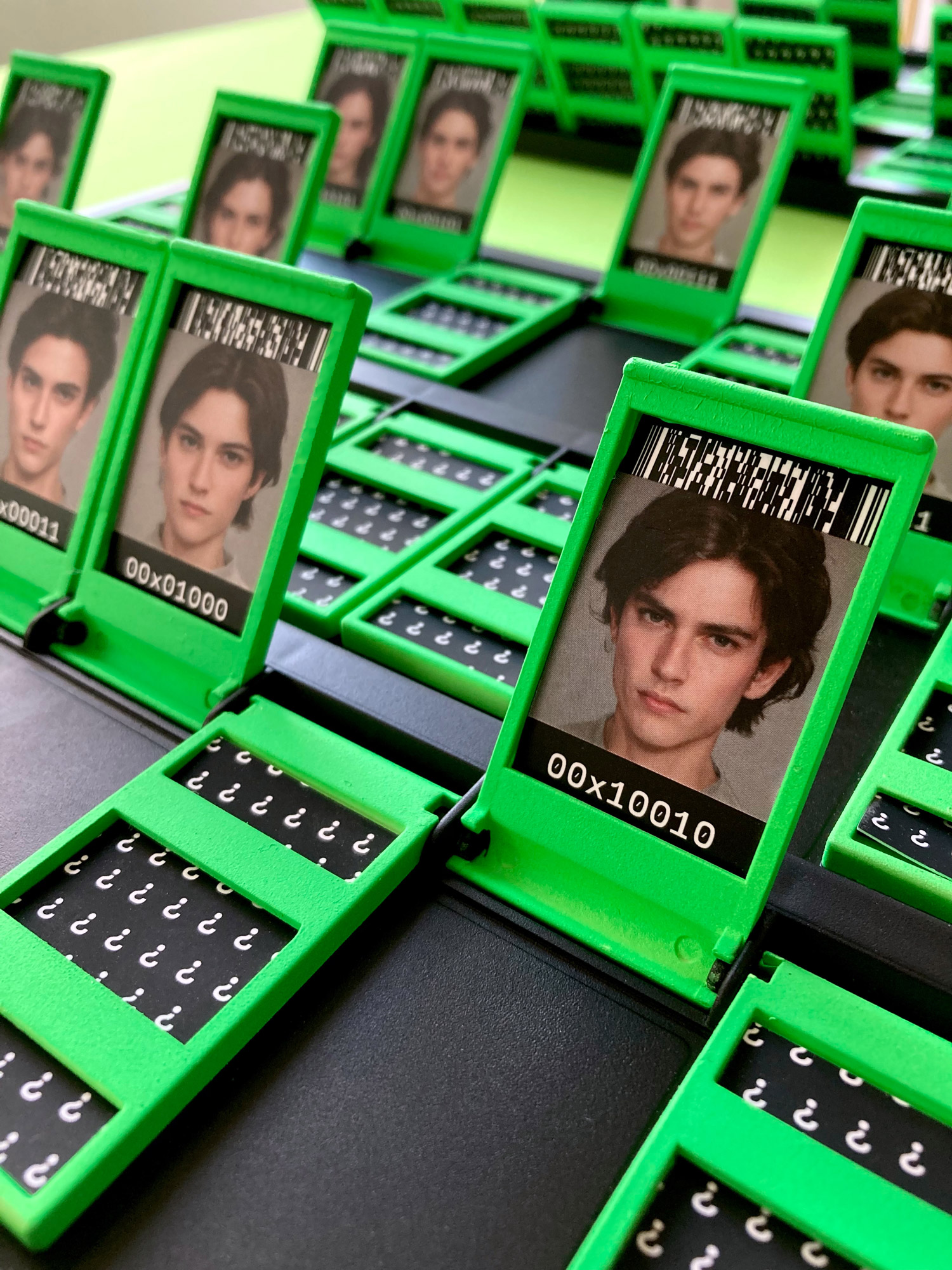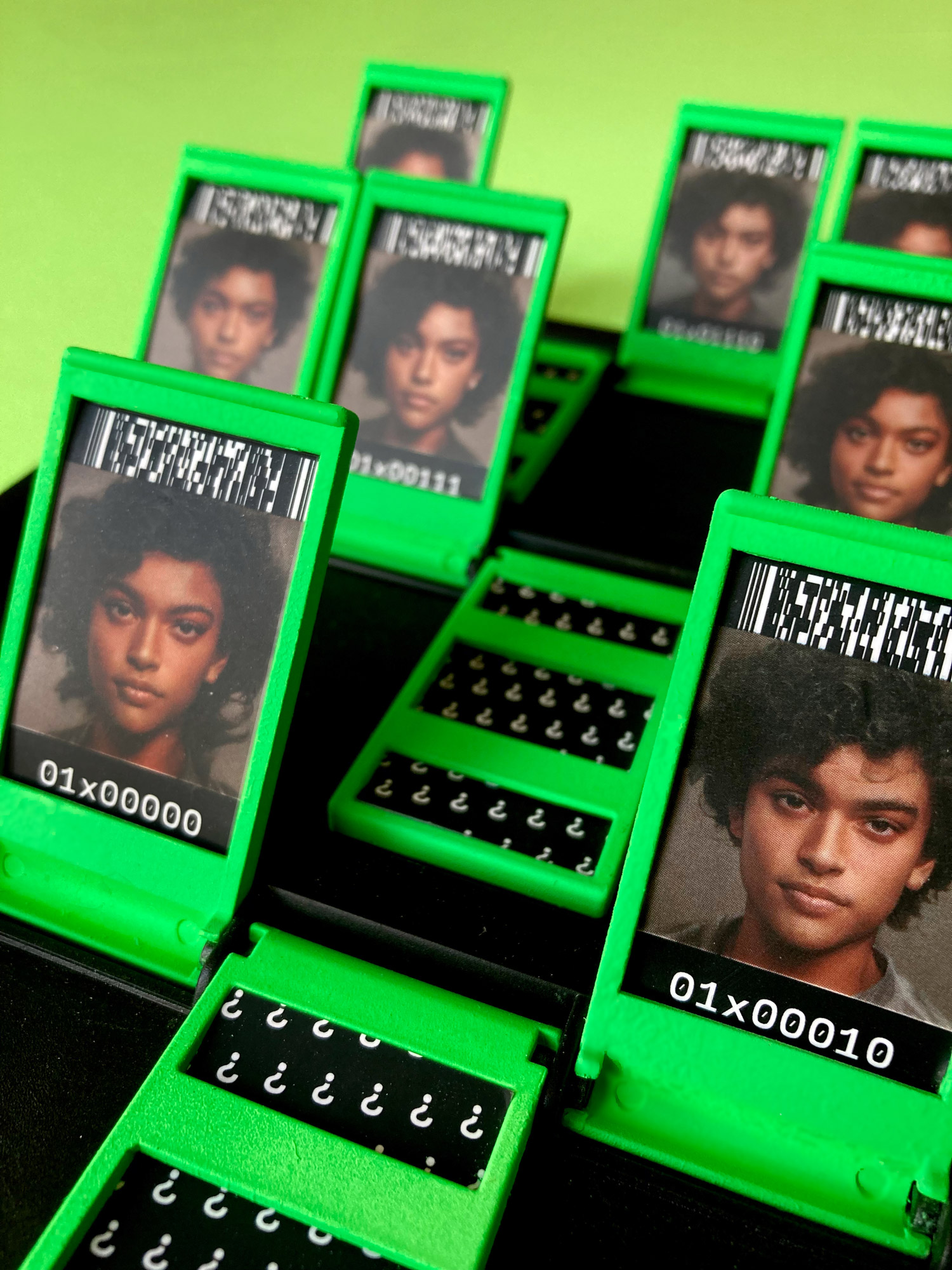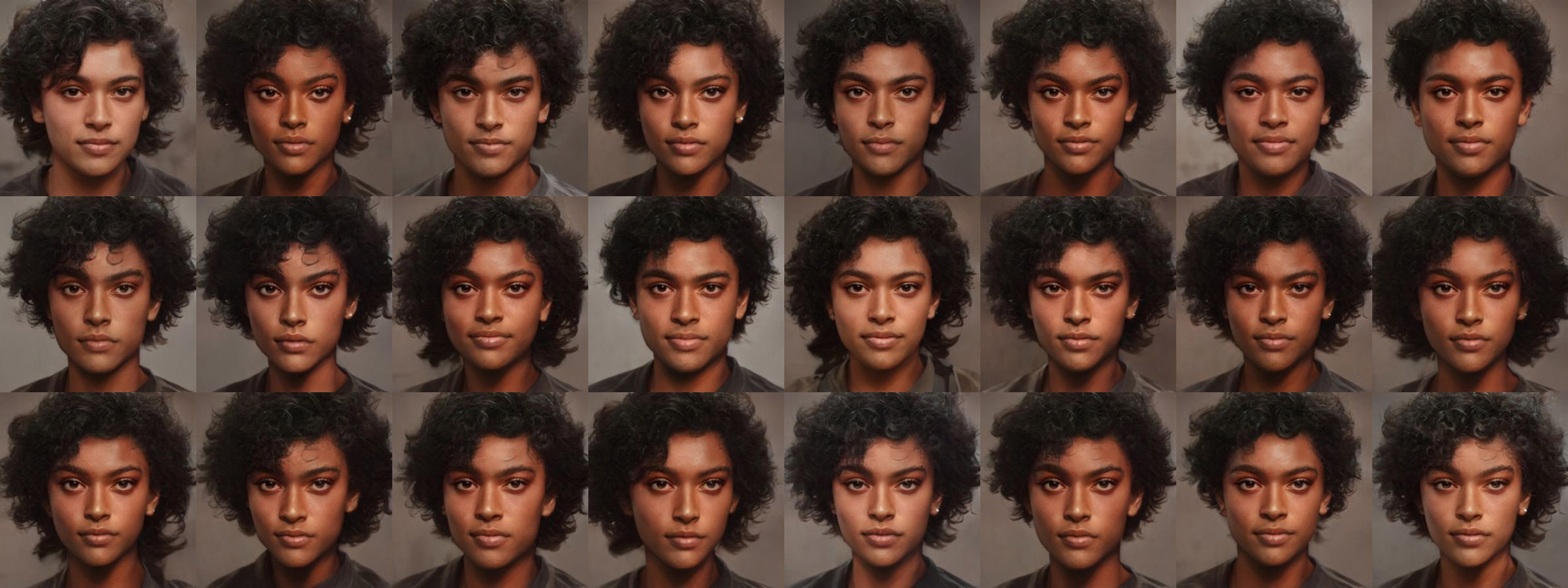
Games like Guess Who? are based on our ability to distinguish differences and similarities in faces and on the risk strategy in asking the right questions.
How would we play such game if the faces were incredibly similar, all look-alike to each other? The ones that appear in this game were generated in multiple sets via a StyleGAN neural network, trained to render human faces.↗ The genetic traits of each face in a set have been calibrated to be unique, yet extremely similar to the others in that specific set.
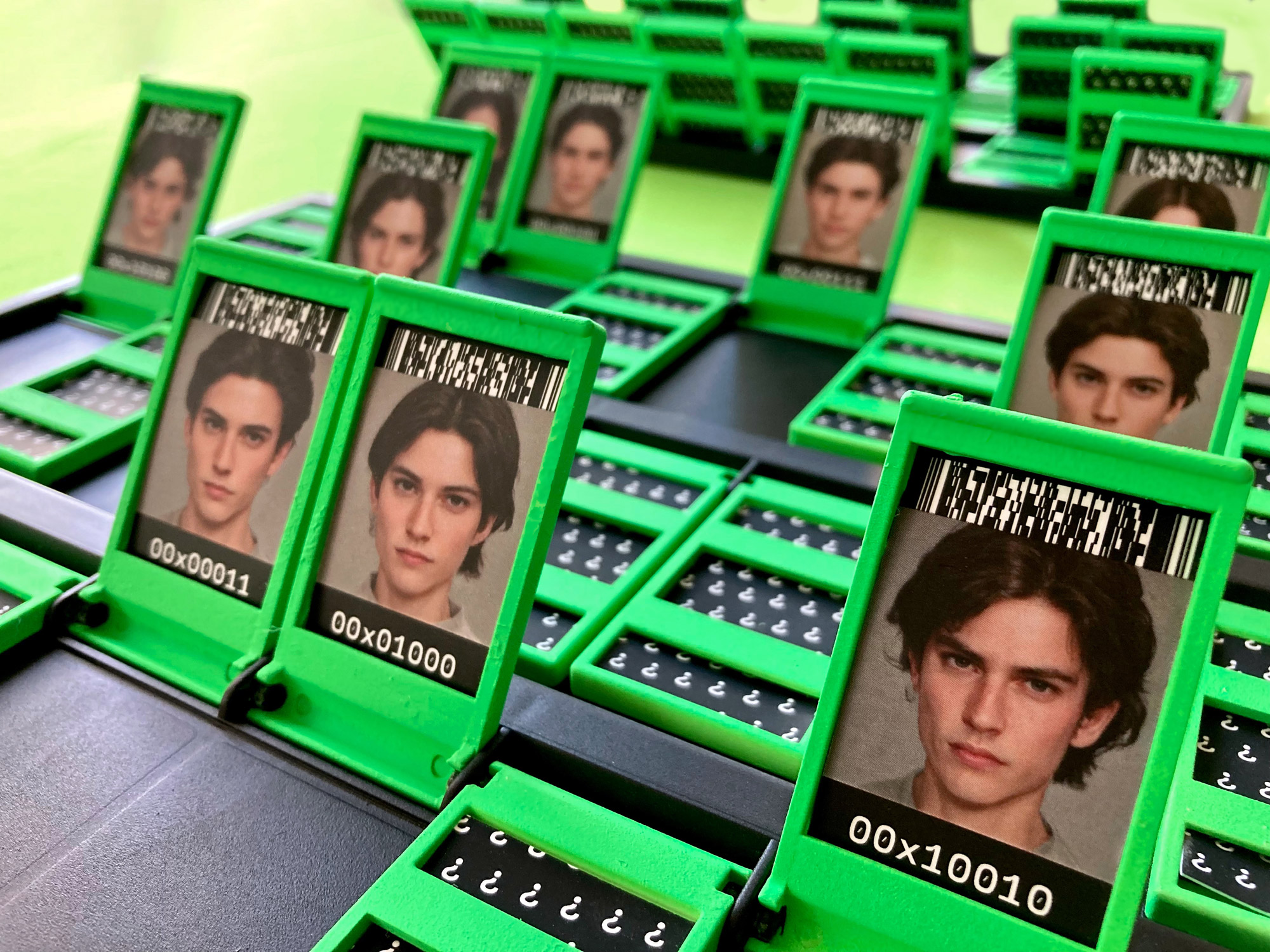
The visual impact of each set of siblings is disarming for our perceptive tools: we grasp the uniqueness of each face but we are stunned by the homogeneity of the group.
What then would be the most suitable questions to skim the squad? Treating categories such as gender in a binary way or generalizing traits such as skin color and age could become useless to identify and distinguish individuals with such nuanced phenotypes.
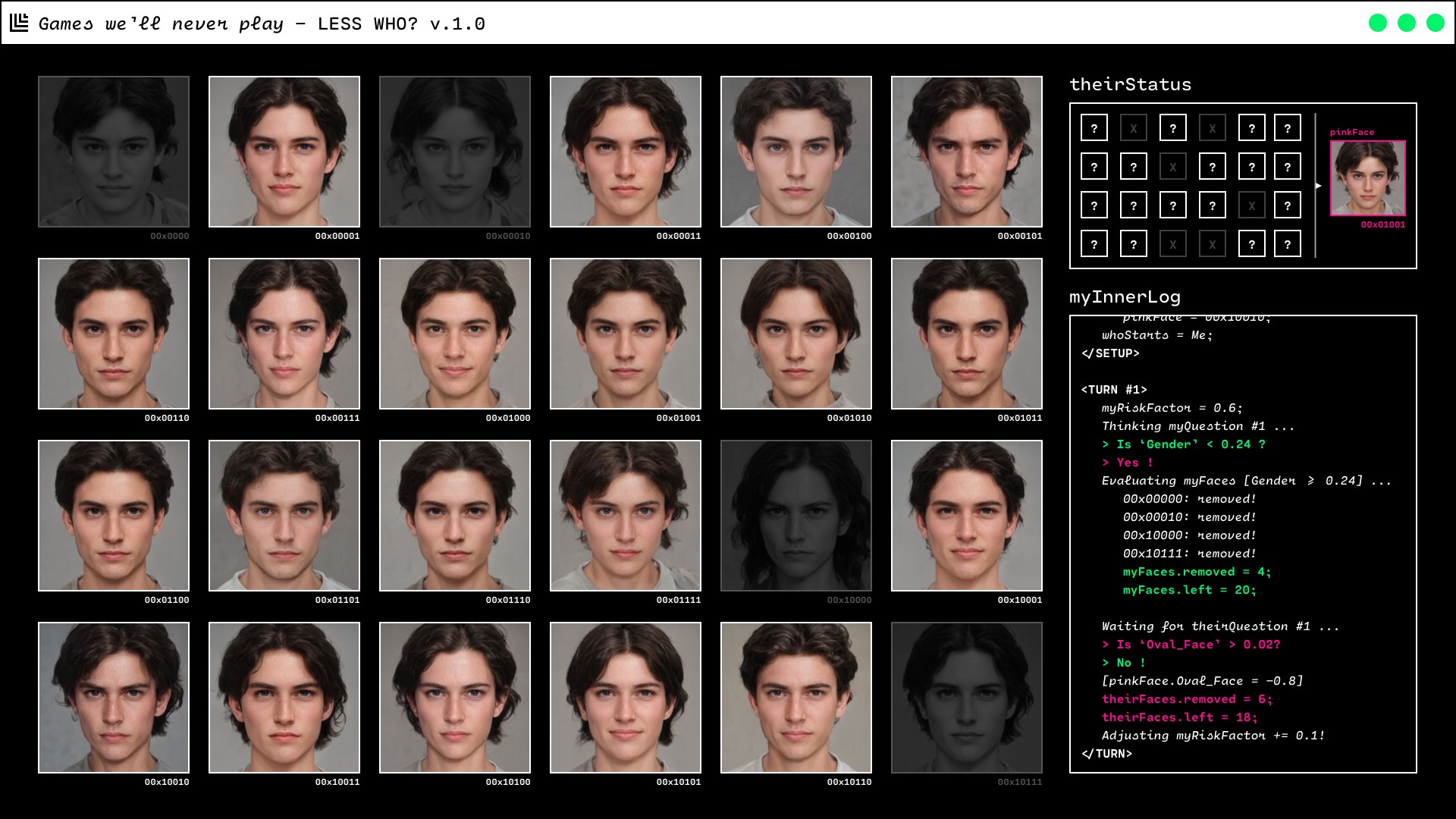
However, if the players were two AIs equipped with facial recognition capabilities, they would not experience any additional difficulties in dealing with this version of the game. To them there is no "male" or "female", just a numeric value for some ‹gender› parameter.
This game aims to question the mental categories that we often adopt in observing diversity, taking them to the extreme where they become pointless.
